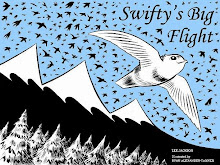Guerilla Sampling Success?

CASE STUDY: Promote a new coffee beverage using earned media and Internet marketing techniques.
PROBLEM:
In the early spring of 2006, we were approached by a successful beverage industry entrepreneur. He had created a concentrated espresso product. To use it you just needed to add milk (cow, soy or rice). Heat – or chill it over ice. And serve. It came in four flavors: vanilla, mocha, caramel and espresso blend with a touch of sugar. Initial research showed that the market wanted a product like this as lattes are expensive, difficult to make at home, and are the most widely purchased product in coffee shops.
The founder’s background driving beverage consumption for leading international brands was an important advantage as we sought to gain attention among Internet-savvy consumers and food and beverage editors.
SOLUTION:
Using our trademark-protected framework – Organize, Strategize, Publicize, Capitalize – we mapped out a strategy to put the product into the hands of food and beverage editors in the founder’s hometown – Los Angeles. That effort was unsuccessful. New product ideas pour into newsrooms daily; there are not enough resources to vet them all. We narrowed our focus to the editors in Glendale, a Los Angeles suburb, where the founder was raised. And while we were able to capture the attention of two reporters there (one, the Glendale editor of the Los Angeles Times), we could never get them to agree to do a story.
We moved up the coast to San Francisco, following on an angle that the product’s long shelf life and fresh-brewed taste would be perfect for offices – especially those in Silicon Valley – a place known for long work hours and bad office coffee. The San Jose Mercury News bought off on the angle and assigned a reporter to the story. While we waited for the Mercury News, we pushed north to Seattle – by-passing Portland media altogether. We believed that if the product idea made the news outside of the Portland market – the company’s home base and an internationally recognized coffee capital – we’d gain the respect of hometown aficionados and critics more easily.
We began our efforts in the early spring. By mid-summer it was apparent that reporters were not interested in hot beverage stories – no matter how novel. The summer heat – the second hottest on record in North America – led us to switch our pitch to “Iced Lattes.” It was an earnest approach, but a late one, as many monthlies are put to bed months in advance of publication. Major daily newspapers also plan their editorial content weeks in advance. Increasingly, we found ourselves at one dead end after another. We had feedback from editors and consumers claiming that they enjoyed the product – its flavor and convenience being the most notable adjectives shared. But, without wider editorial coverage, coupled with consumer purchases in stores where the product was already stocked – grocery chain buyers saw no reason to take a chance on the product.
The founder believed that without consumer awareness, the product would not move. We agreed. Although, we has a suspicion that the product required a paradigm shift in how people enjoyed their morning coffee that it would take longer then we had allotted to spur consumer demand. As of this writing, that theory appears to be correct.
Permit us a little diversion here. Lattés are not convenience products. Consumers expect them to cost more in terms of ingredients and time for preparation. In addition, sipping lattés is a social activity – most frequently done in coffee shops. It might be an oversimplification, but coffee enjoyment is a singular pursuit. Latté enjoyment is a social pursuit. Research supports this view. According to Marketresearch.com, in 2003 lattes made up 42 percent of all drinks sold at coffee houses, with brewed coffee a distant second at 16 percent. It’s possible that in the consumers’ minds they equate lattés with group or public consumption. Concentrated lattés made at home don’t have the same “feel” to the consumer.
When you think back to ads in the 1970s and 1980s, coffee ads focused on the personal pleasure one received from drinking fresh-brewed coffee at home (e.g., “The best part of waking up is Folgers in your cup.”). Compare this to ads for Nescafe International Coffees, which always featured two or more people enjoying the diversion on special occasions.
In the workplace, the consumer needs at least a refrigerator and a microwave to store the milk and the open product (it’s refrigeration shelf-life is about 60 days) and to prepare the product hot. Plain coffee requires no refrigeration and only a hot pot or microwave to heat water plus either a coffee filter or a French press. Clean up is minimal.
RESULTS:
With editors and reporters at major dailies and relevant monthlies rejecting coverage – or postponing intended coverage – we turned to venues on the Web. Weblogs written by coffee aficionados were a primary target. Sites that were written by tastemakers were another (e.g., CelebrityCafe.com, PortlandPicks.com, DailyCandy.com, etc.).
We posted an offer for free samples on about a dozen sites. The reaction to the offer was immediate. Within 48 hours we received more than 50 requests for samples from all over the country. Within two weeks we had well over 100 requests. And, on it went. And while the numbers were small, we did prove the power of guerilla sampling. We received feedback from almost all of the people who received the product and were able to post those testimonials on the site.
This effort continues as we write, so stay tuned for the further results as they become available.













